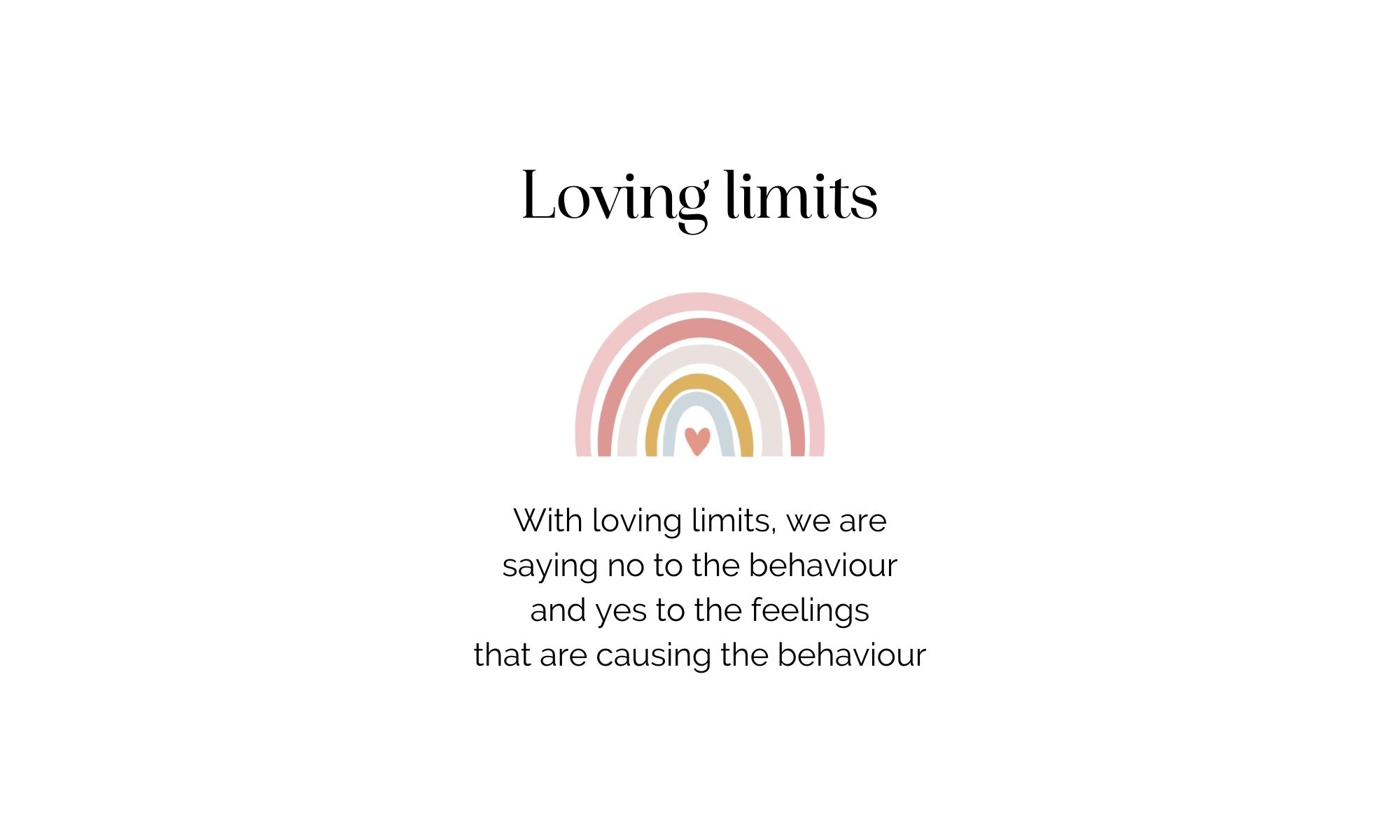Loving limits express a ‘no’ to a chid’s behaviour and a ‘yes’ to the feelings that are causing the behaviour.
* In our behaviour and language, we are communicating both compassion AND a clear limit.
We are pairing empathy, eg.
I see that you’re upset
I see that you really want that
I’m here
I’m listening.
With the limit, eg.
I’m not willing for you to have any more
I’m not willing for you to do that
I’m not willing to give you any more right now.
Loving limits are COMPASSIONATE, CALM and CLEAR!
Loving limits are NOT harsh, punitive, shaming, judging or disconnecting.
When we offer a loving limit, we understand that the our child’s behaviour is caused by painful feelings
AND that the loving limit is not only designed to stop the behaviour, but is also about listening to the underlying feelings.
I developed the term ‘loving limit’ and it is now a part of Aware Parenting.
However, the specific language that I talk about below to use with loving limits is not a part of Aware Parenting.
We can offer loving limits in two main ways.
1 ~ in response to aggression;
2 ~ in response to suppression.
AGGRESSION:
Here, I like to express the limit first and then give the empathy.
“I’m not willing for you to hit Susan,
and I’m right here, and I’m listening.”
I will take the minimal physical action to prevent the behaviour too.
SUPPRESSION:
With suppression, I generally offer the empathy before the limit.
“I see that you want xyz, sweetheart, and I’m not willing for you to have that.”
(With suppression/control patterns, I recommend increasing connection and attachment play in general before offering loving limits).
